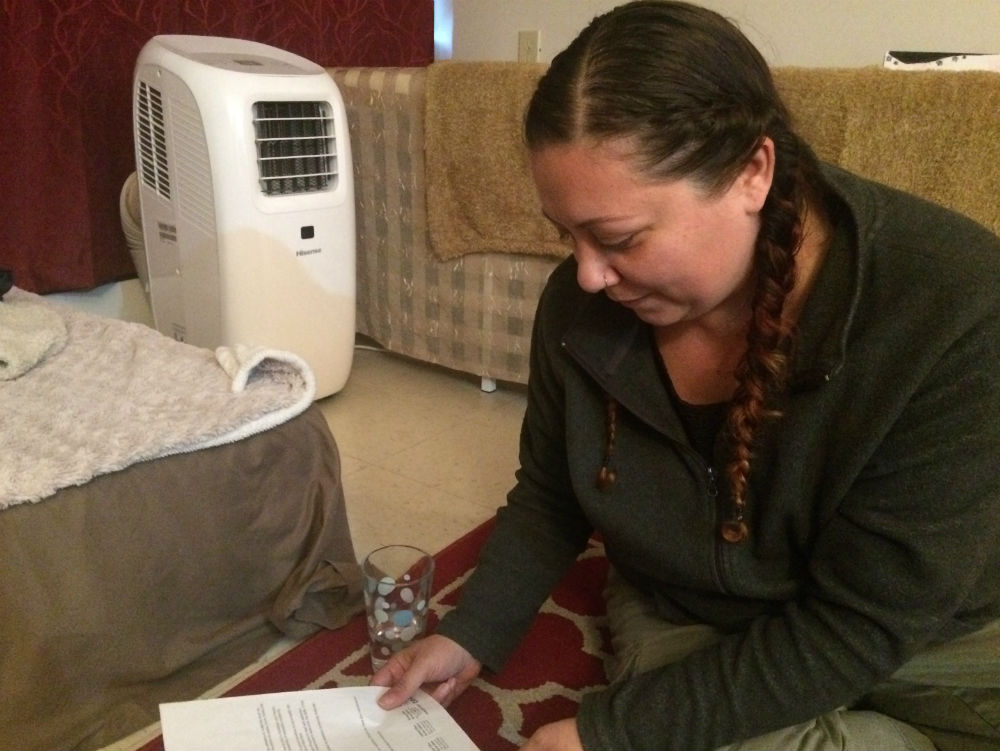By: Katie Jacobs

According to an analysis of Canada’s 2016 census, Alta Vista is the worst area to find suitable housing in Ottawa.
Among the top five are Kitchissippi, Somerset, Bay, Gloucester – Southgate, and the Rideau areas. These wards are in close proximity to each other.
Jeanette Tossounian, an artist, author and activist, lives in community housing within the Rideau vicinity. Her apartment has a vinyl covered mattress with brown blankets in her living room.
She never sleeps on it.
Instead, Tossounian sleeps on a massage table, with the lights on, so bed bugs can’t reach her.
“It’s really uncomfortable,” says Tossounian.
Each of her walls are decorated with at least three pieces of artwork. She jokes that one painting is probably worth more than her apartment.
“It’s an old building, so there’s always things breaking down,” says Tossounian, who experienced her water being shut off, asbestos notifications, and fire alarm tests at least twice a month. “The elevators are always breaking down. I’ve heard of people being stuck … it missed my floor a couple times.”
Tossounian moved in last April with no possessions after being wrongfully accused and arrested for burning down her own art gallery. Before, she was living in an office space and sleeping on a futon.
Although Tossounian says the apartment itself is fine, she wants to leave.
“I don’t want to be permanently in housing, and there’s a lot of people who, like me, just see it as a temporary thing, but the only other thing that is more temporary is a shelter,” she says.
Larissa Silver, the director of community services at the Youth Services Bureau, says finding stable housing is difficult because of Ottawa’s high demand and competition.
“There are very few vacancies in the city … so landlords can be pickier on who they choose to rent their apartment to,” explains Silver, who works with youth who seek more accessible and reasonable housing. “In a tight market with very limited income, your options are pretty limited.”
Silver says she works with youth to understand their legal rights with landlords. She adds there is some discrimination based on age or stigma towards youth behaviour.
Silver works in two transitional housing shelters that help youth prepare for independent living and long – term housing. She says she works within the Vanier, Kitchissippi, and Bayward areas.
“Some of those areas … have a higher concentration of lower income housing,” explains Silver.
According to Canada Without Poverty, three million Canadian households are unaffordable, below standards, or overcrowded. ( )
Michele Biss is the legal education and outreach coordinator at Canada Without Poverty.
She explains access to services or housing crises is usually the reason why low-income populations are grouped together.
Biss adds people who are disabled, racialized, women, have mental health issues, are single mothers, indigenous, and LGBTQ often experience unsuitable housing. She says many of these individuals don’t have access to legal resources to assert their rights.
Biss mentions Herongate as an example, where an entire block of people was evicted, including a large Somali population, in order to build a higher income condo.
“They have driven people out of their homes. They have harassed people, they have bullied people, the conditions of the housing prior to this change were so horrifyingly terrible,” says Biss.
Herongate is within the Alta Vista district.
Tossounian is working on her second film documentary about her life, as well as others, in community housing.
“I’m happy to have a place of my own, and an address,” says Tossounian. “But the lack of a nice good sleep … I look forward to moving out and buying nice new furniture I know will have no bed bugs in it.”
She adds she is going to apply to the government’s $40 billion plan to see if she qualifies for an affordable housing complex.
“Nobody really wants problems just because they need a place to stay,” she concludes.
https://www.documentcloud.org/documents/5025126-2017-Poverty-Progress-Profiles-318.html




